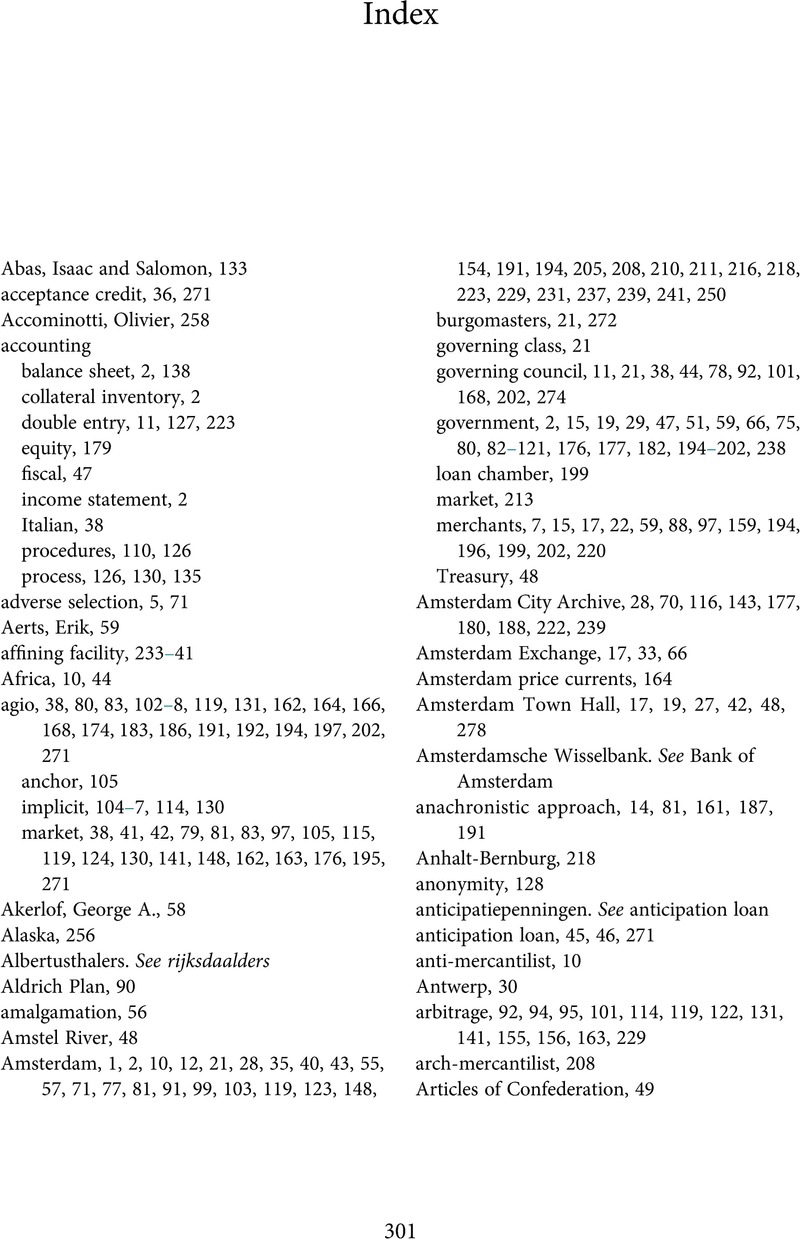Book contents
- How a Ledger Became a Central Bank
- Studies in Macroeconomic History
- How a Ledger Became a Central Bank
- Copyright page
- Dedication
- Contents
- Figures
- Tables
- Acknowledgments
- Disclaimer
- 1 Similar yet Different?
- 2 The World of the Bank
- 3 Coins in Eighteenth-Century Amsterdam
- 4 First Steps, 1609–1659
- 5 Emergence of the Receipt System, 1660–1710
- 6 Metal in Motion: The Mechanics of Receipts
- 7 Two Banks and One Money, 1711–1791
- 8 Prussia’s Debasement during the Seven Years War: the Role of the Bank
- 9 The Bank’s Place in Central Bank History
- Glossary
- Primary Sources
- References
- Index
Index
Published online by Cambridge University Press: 16 November 2023
- How a Ledger Became a Central Bank
- Studies in Macroeconomic History
- How a Ledger Became a Central Bank
- Copyright page
- Dedication
- Contents
- Figures
- Tables
- Acknowledgments
- Disclaimer
- 1 Similar yet Different?
- 2 The World of the Bank
- 3 Coins in Eighteenth-Century Amsterdam
- 4 First Steps, 1609–1659
- 5 Emergence of the Receipt System, 1660–1710
- 6 Metal in Motion: The Mechanics of Receipts
- 7 Two Banks and One Money, 1711–1791
- 8 Prussia’s Debasement during the Seven Years War: the Role of the Bank
- 9 The Bank’s Place in Central Bank History
- Glossary
- Primary Sources
- References
- Index
Summary

- Type
- Chapter
- Information
- How a Ledger Became a Central BankA Monetary History of the Bank of Amsterdam, pp. 301 - 312Publisher: Cambridge University PressPrint publication year: 2023

